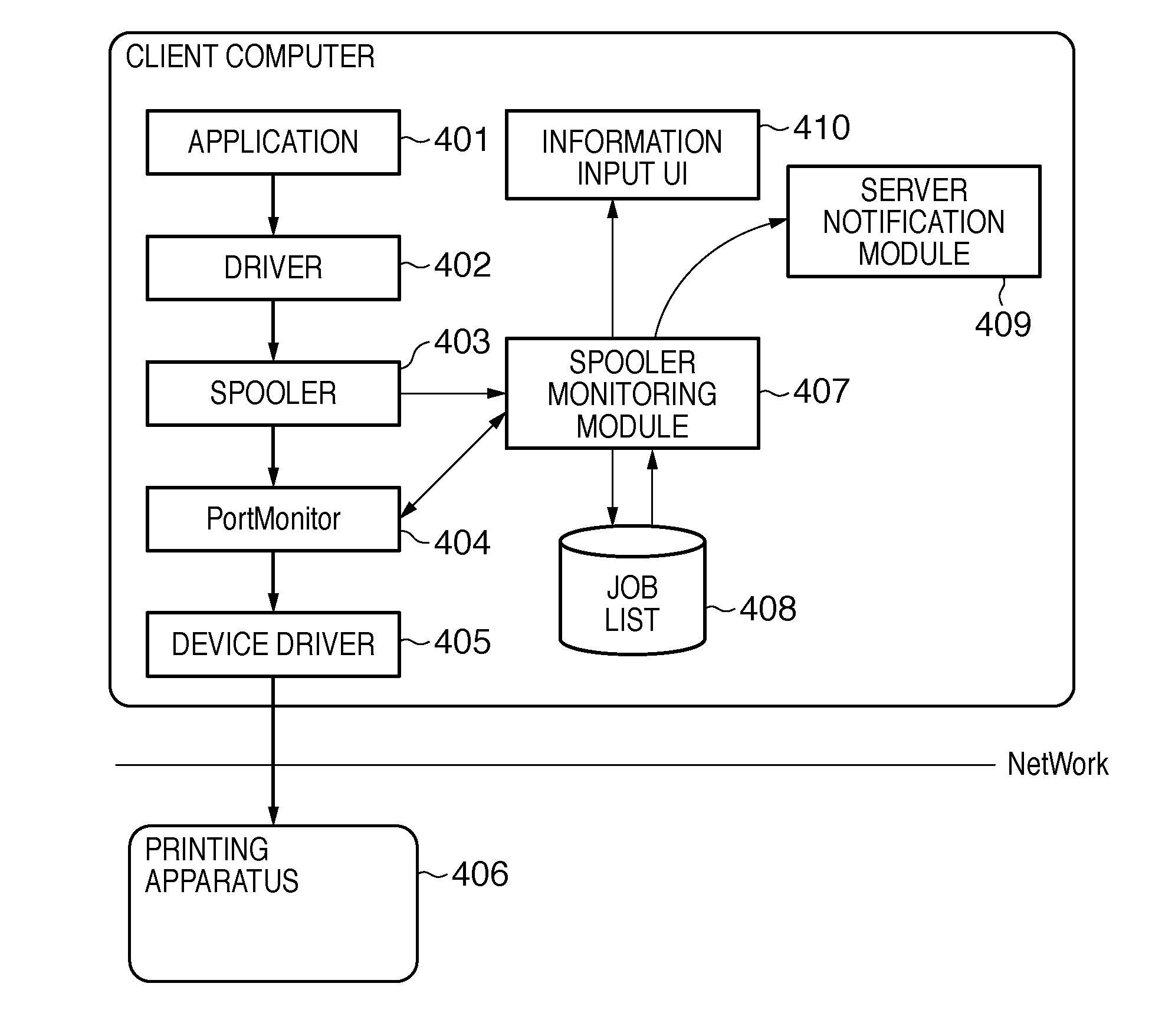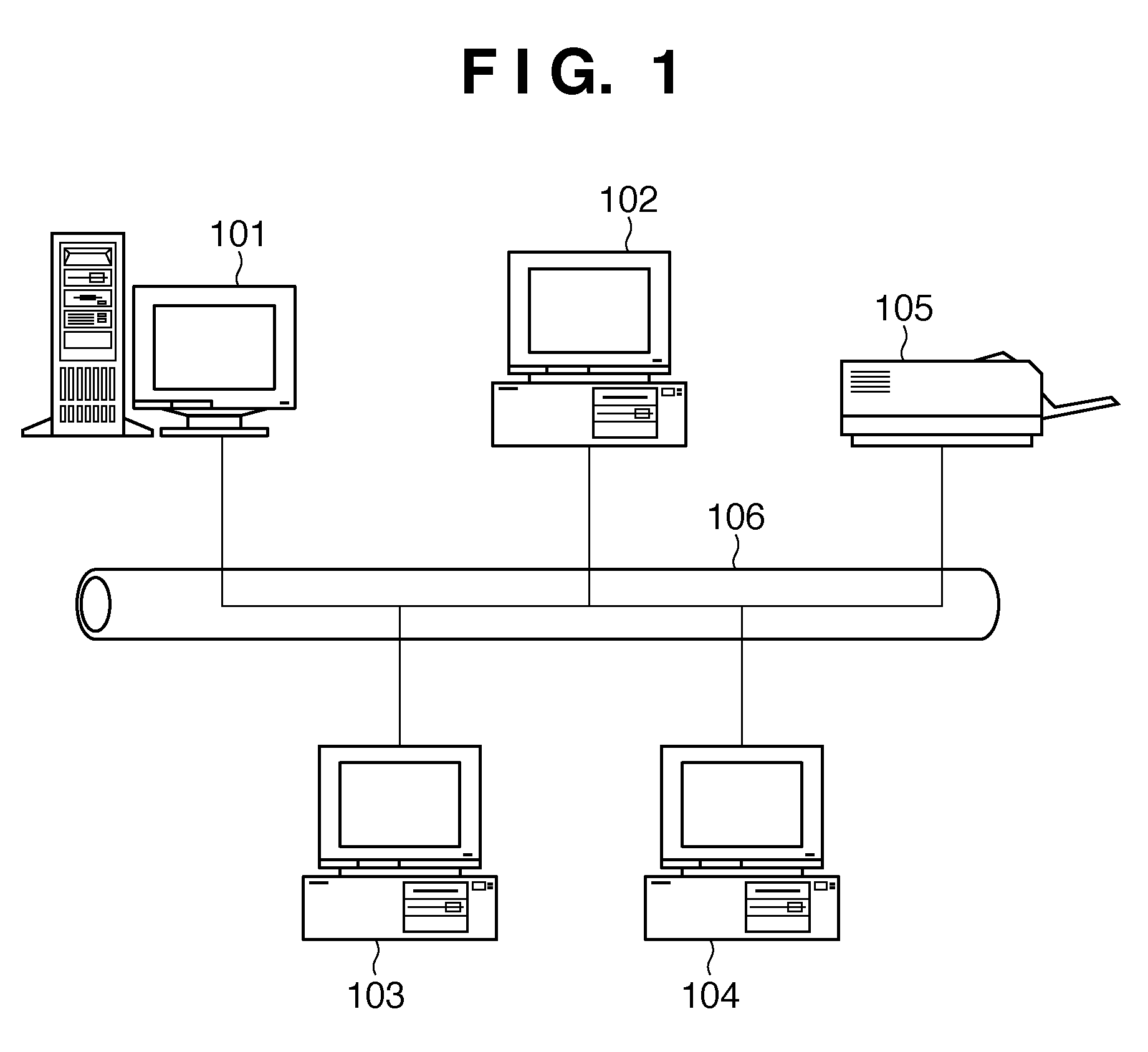Information processing apparatus, control method, and program
a technology of information processing apparatus and control method, applied in the direction of digital output to print units, instruments, computing, etc., can solve the problems of reducing the print processing speed, and achieve the effect of saving print data, improving user friendliness, and reducing the job sending speed
- Summary
- Abstract
- Description
- Claims
- Application Information
AI Technical Summary
Benefits of technology
Problems solved by technology
Method used
Image
Examples
first embodiment
[0064]The first embodiment will be explained with reference to FIGS. 9, 10, 11, 12, 13, 14, and 15. FIGS. 9 to 12 show a series of divided sequences. Main processors (spooler, port monitor, printing apparatus, spooler monitoring module, and archive module) in FIGS. 6 to 8 cope with FIGS. 9 to 15.
[0065]FIG. 9 is a flowchart exemplifying the basic operation of the port monitor according to the first embodiment. For descriptive convenience, the port monitor automatically starts upon activation of the spooler system on Microsoft Windows®, and automatically ends at the end of the spooler system. The port monitor is assumed to adopt print monitor functions laid open to the public by MSDN (Microsoft Developer Network)®. In S901, the port monitor determines a function called by the spooler. If the function is a public function StartDoc( ), the process advances to sequence (A) in FIG. 10 to perform processing at the start of a job. If the port monitor determines in S901 that the function is ...
second embodiment
[0082]The second embodiment will be explained with reference to FIGS. 9, 13, 14, 15, 16, 17, and 18. The first embodiment has described a printing history management system which deletes a job. The second embodiment will examine application of the present invention to a system which stops execution of a job without deleting it when the number of jobs has exceeded the upper limit value of jobs processible for a given user. A description common to the first embodiment will not be repeated, and only a difference will be explained. The second embodiment is different from the first embodiment in the sequences of FIGS. 16, 17, and 18. Similar to the first embodiment, main processors (spooler, port monitor, printing apparatus, spooler monitoring module, and archive module) in FIGS. 6 to 8 also cope with FIGS. 16 to 18.
[0083]FIG. 16 is a flowchart exemplifying the basic operation of the port monitor at the start of a job according to the second embodiment. This sequence corresponds to FIG. ...
third embodiment
[0088]The third embodiment will be explained with reference to FIGS. 9, 13, 14, 15, 18, 19, and 20. The second embodiment has described a printing history management system which suspends a job. The third embodiment will examine application of the present invention to a system which changes an attribute, for example, forcibly changes single-sided printing to double-sided printing by correcting job data. A description common to the second embodiment will not be repeated, and only a difference from the second embodiment will be explained. The third embodiment is different from the second embodiment in the sequences of FIGS. 19 and 20. Similar to the second embodiment, main processors (spooler, port monitor, printing apparatus, spooler monitoring module, and archive module) in FIGS. 6 to 8 also cope with FIGS. 19 and 20.
[0089]FIG. 19 is a flowchart exemplifying the basic operation of the port monitor at the start of a job according to the third embodiment. In S1901, the port monitor in...
PUM
 Login to View More
Login to View More Abstract
Description
Claims
Application Information
 Login to View More
Login to View More - R&D
- Intellectual Property
- Life Sciences
- Materials
- Tech Scout
- Unparalleled Data Quality
- Higher Quality Content
- 60% Fewer Hallucinations
Browse by: Latest US Patents, China's latest patents, Technical Efficacy Thesaurus, Application Domain, Technology Topic, Popular Technical Reports.
© 2025 PatSnap. All rights reserved.Legal|Privacy policy|Modern Slavery Act Transparency Statement|Sitemap|About US| Contact US: help@patsnap.com



